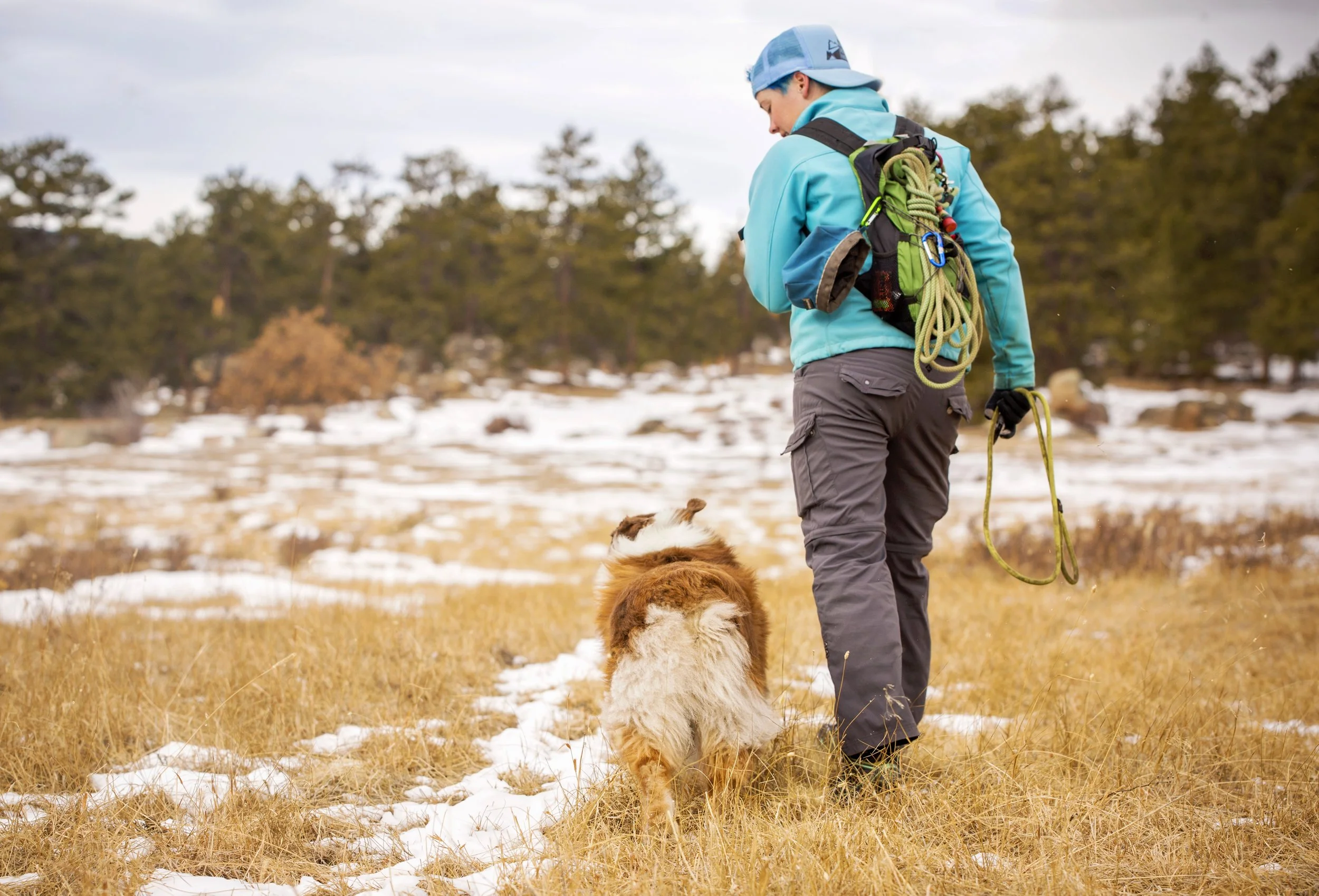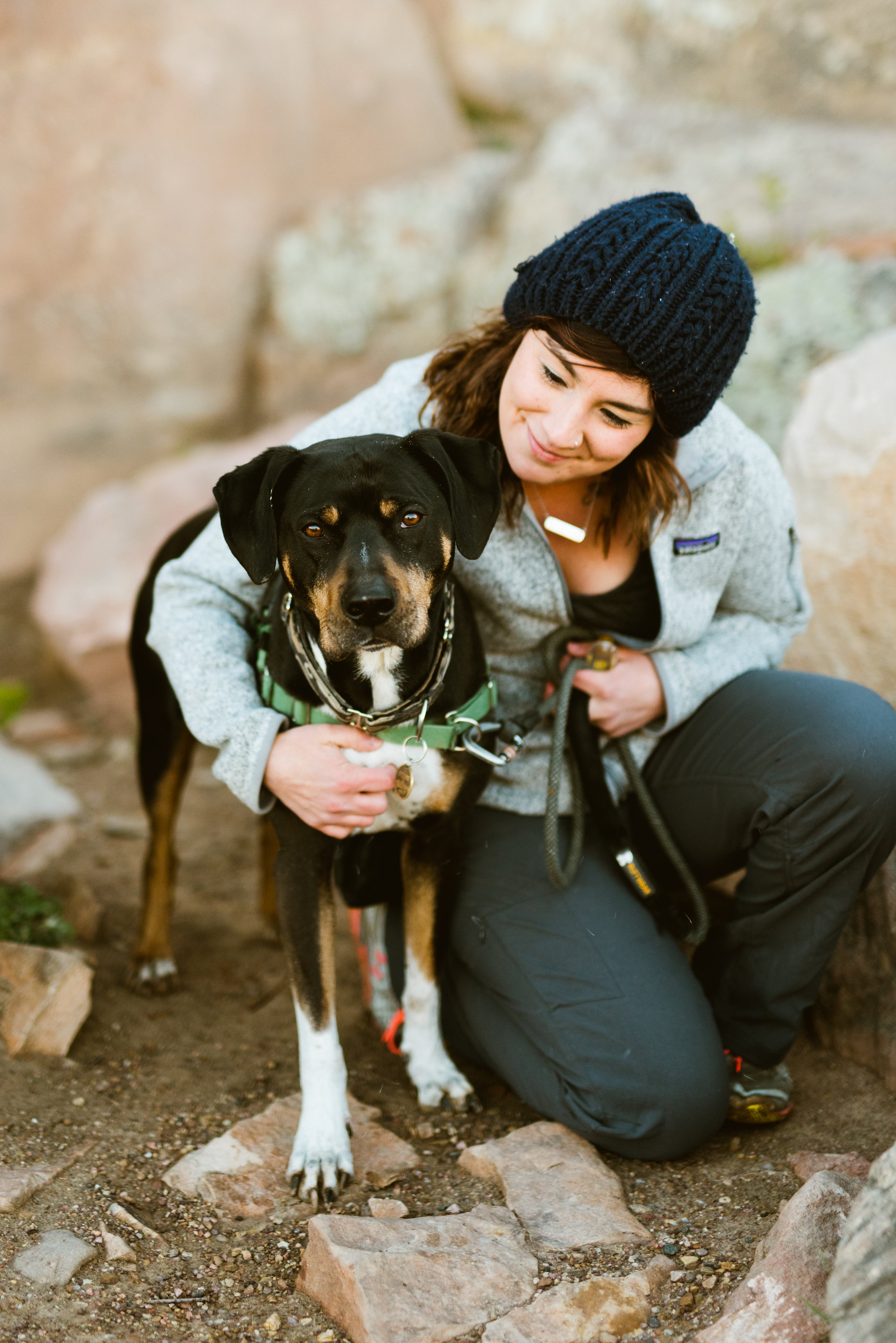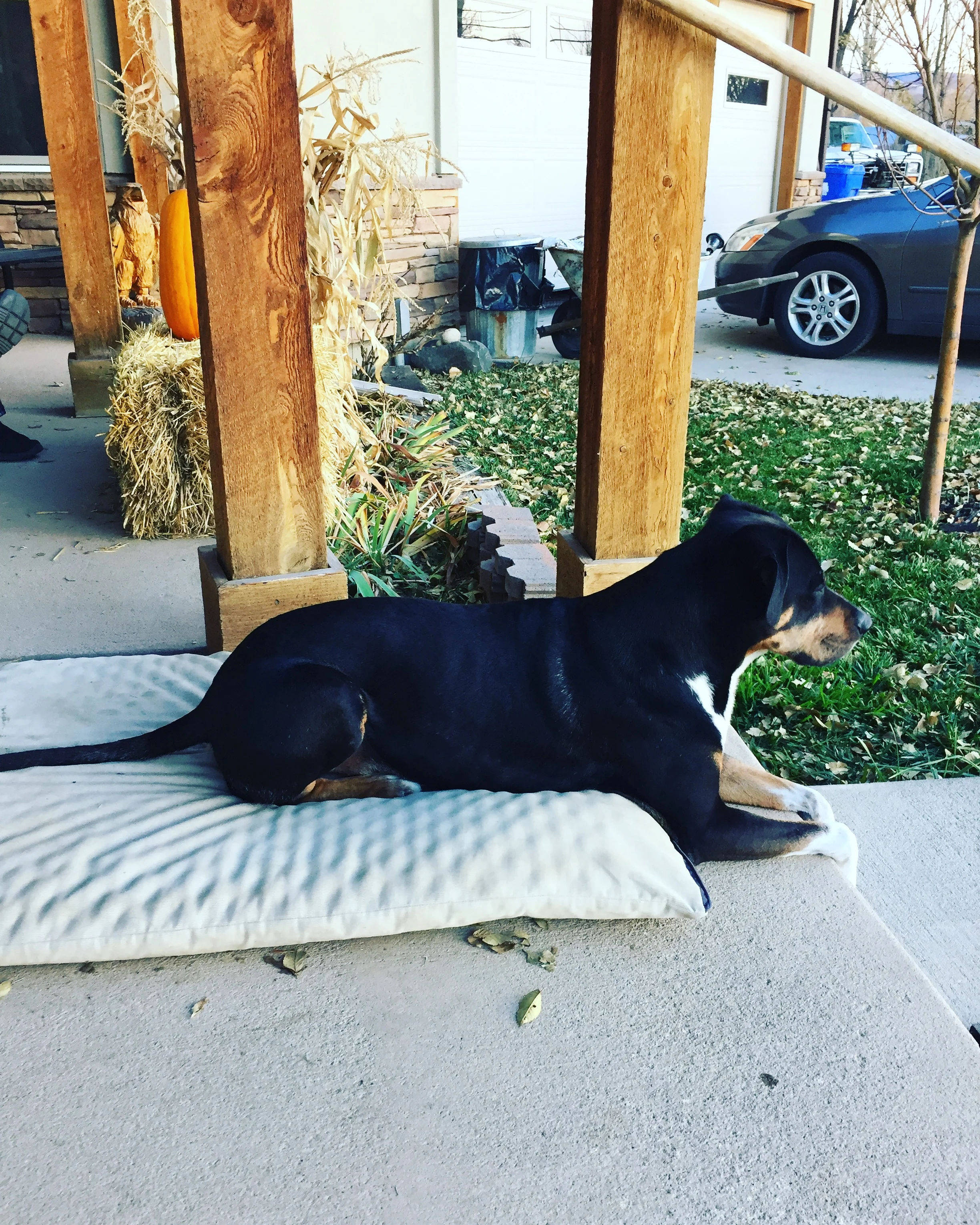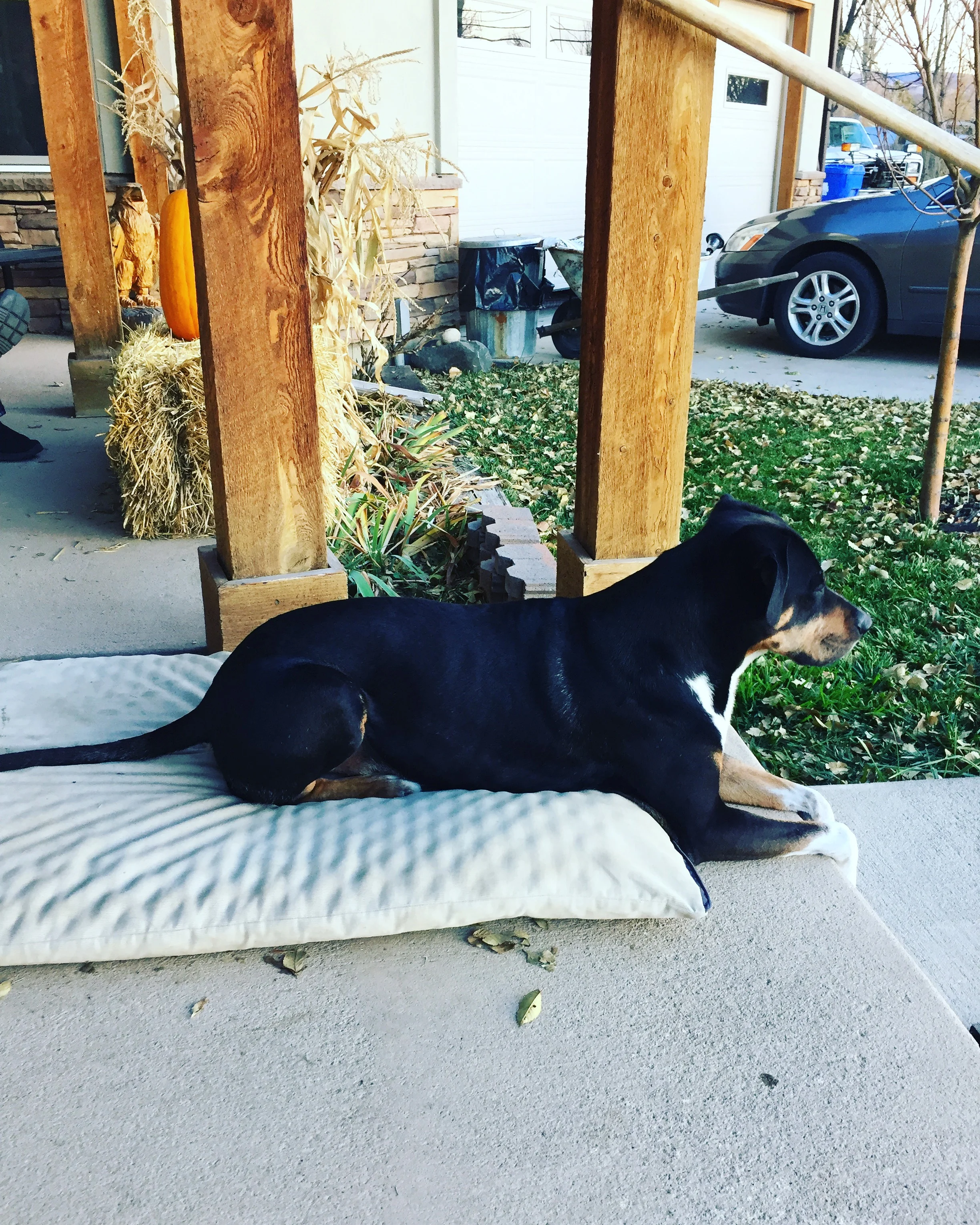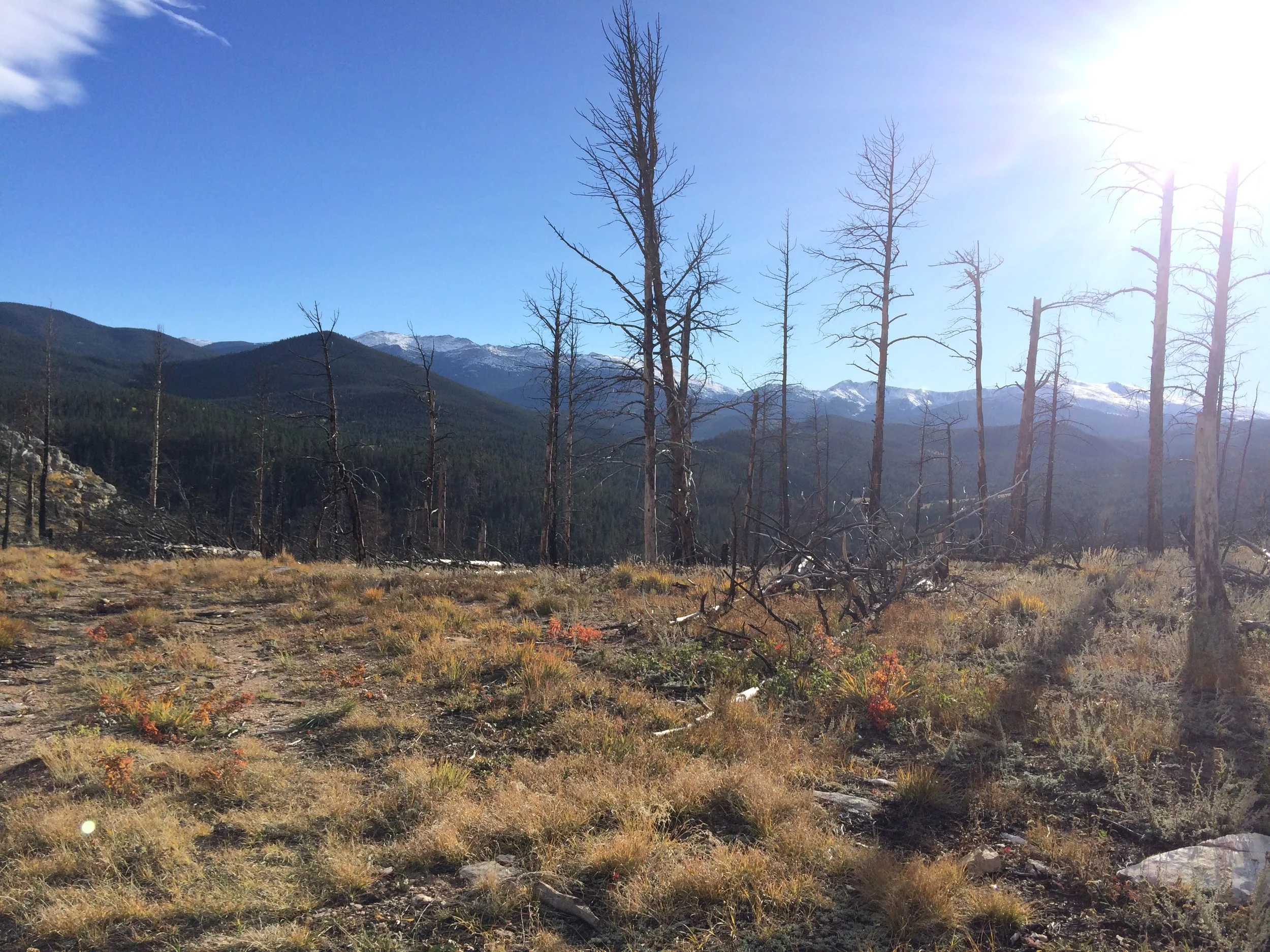Oh wait, that's me.
And you, I presume, if you have spent a precious shard of spare energy clicking through to this post.
(And by the "force-free" label in the title of this missive, I simply mean any of the various ridiculously-numerous labels we can split hairs over while still remaining committed to the common chord of using the least amount of force and the most amount of science in the dog training principles we employ with our clients and our own dogs.)
Back on track now, so:
Dear Us,
You know that one time (or is it 20 times now? I've lost count.) where you saw someone treating their dog (or their client's dog) in a way that made you really, really sad/angry/defeated/[insert other negative emotion here]?
Or that email that you got last month from a client about how their neighbor recommended a bark collar and they think they're going to try it because they just can't put the time in to get the dog the exercise needed to reduce the behavior challenges like you recommended? We all know those emails. The ones that have made our insides turn with all the anguished feelings.
Or what about that time when a client told you they are taking their sweet puppy to a dominance-based trainer because "positive training seems really great for most dogs, but my dog is a [insert any freaking breed (or species) needed as an excuse here] and they need a ‘special’ type of training"?
Even if these aren’t your exact scenarios, unless you live in a utopia where scientifically-sound dog training is already the mainstream in your neighborhood (in which case what’s your secret?), you have likely faced defeating moments just like these in the course of your career and just day-to-day life.
I’m not here to talk about how we fix this. Yes, there is something broken here that allows forceful training to continue to hold a significant market share in our industry. Yes, it needs to be addressed. But first I think we need to fix something else.
We need to fix Us.
What’s wrong with us? What causes us to be undone by the merest of brushes with anything connected with the “underbelly” (as we often consider it) of our industry? Is it just that we care too much?
But when we respond to these triggers with reactivity (whether expressed outwardly in the moment, bottled up inside, or blurted out in an angry Facebook rant), that doesn’t seem like an expression of excessive care. That seems like a supercharged conditioned emotional response that may be rooted with a little bit of rationality but that has been blown WAY out of proportion. Just like our reactive dog students that we meet with day in and day out.
I am so guilty of this. (I can confess to shedding a few tears of realization as I have been working this out in my head and on paper.) I’m very quick to write a ranting post on Facebook about something I’ve seen that makes my stomach turn – the commiseration I get from my force-free friends and colleagues makes me feel justified in my righteous anger. On the other side of the coin, when I have had clients make what I consider to be bad decisions about their dogs, I tend to bottle up my anguish and defeat inside until I have a hard time remembering why I get out of bed in the morning to do what I used to love to do.
Don't get me wrong, there may be a proper place for ranting. There may also be a place for bottling up and pressing on. But systemically, we cannot keep doing this to ourselves.
Focusing on these negative aspects of our lives and careers causes anxiety, fear, anger, frustration, burnout, depression – sounds a lot like the list of potential fallout connected to aversive training methods. This is NOT what force-free training is about. Spending our energy this way is not healthy or fair – to our clients, to our own dogs, to ourselves.
So what do we do instead?
The modern dog training mantra for changing unwanted behavior in our dogs can be boiled down to “reinforce what you like, redirect what you don’t”. We talk a lot about creating differential reinforcement of incompatible behaviors, or classical counter-conditioning (CCC) to build a different (and more preferable) emotional response. We do these processes with our clients’ dogs all the time. So how can we apply them to ourselves too?
I’ve been thinking a lot about this today. I don’t have all of the answers, but here are the ideas (the incompatible behaviors and the counter-conditioning tools) that I’ve come up with so far. I’ll be writing these for myself in an accessible place, and trying to find one or two to implement next time I feel a reactive response coming on.
- Find grace for others – chalk it up to ignorance rather than willful mistreatment
- Celebrate the little wins – what client did you see this week that really gets it?
- Help the dogs & humans that you can – for every bad egg, there are 2-3 dozen good eggs at least
- Engage in positive discussion with traditional trainers – not sure how exactly to do this, but I really want to try harder in this area!
- Make time for self-care – try CCC with yourself. Take your own dog for a hike or training session every time you have an experience that makes you feel defeated. I practiced this one today and it was marvelous.
I know this doesn’t fix all the problems for every dog in the world who still has to deal with the fallout from traditional training methods. But we have to set ourselves up for success too. If we trigger-stack and get reactive to the other inhabitants of the dog training industry, we can’t help anyone, least of all ourselves, in the enormous task of changing the dog world for the better.
I'm working on myself with this too. Feel free to redirect me in a more preferable direction when you see me exhibiting reactive tendencies. Because that's what we as modern dog trainers should be all about with ourselves as well as our dogs. We don't needed to be perfect all the time (letting a rant escape here and there is ok!), but if we can consistently take baby steps in the right direction, gradually building the behavior we want to see, we can build more positive relationships with ourselves and others. Only then can we achieve great things together.
Much love,
- Amber





